Table of Contents
Growing fruits and vegetables can be very therapeutic for some people, and for some, it is their source of livelihood. However, growing carrots can be very tricky sometimes. There is a need for planning beforehand to have produce in surplus amount. Carrots are biennial vegetables. Thus, this particular species can grow within two seasons. Moreover, people enjoy sweet and crunchy vegetables, but it is a lot more tricky to produce such vegetables.
As cool as it looks, it is also a cool-season crop that is grown in spring. Not only do they taste good, but they also have good qualities, such as it is an excellent source of vitamin A.
Carrots are naturally sweet, especially that are homegrown, compared to ones available in grocery stores. When you grow your first batch of carrots, you will learn that several carrots are not straight but have different shapes and sizes. However, it would still taste better. To have a better understanding of each and every tiny detail, we have curated tips for growing and taking care of carrots so that you don’t have to hustle.
How to Grow and Take Care of Carrots
1. When and Where?
Growing carrots is not everyone’s cup of tea. It needs proper planning. You kneed to know the best-suited weather condition in order to have healthy produce. It grows well in winter or cool weather. The best tip for growing and taking care of Carrots is to sow the seeds in the spring or even two or three weeks prior to the last frost when the land is ready.
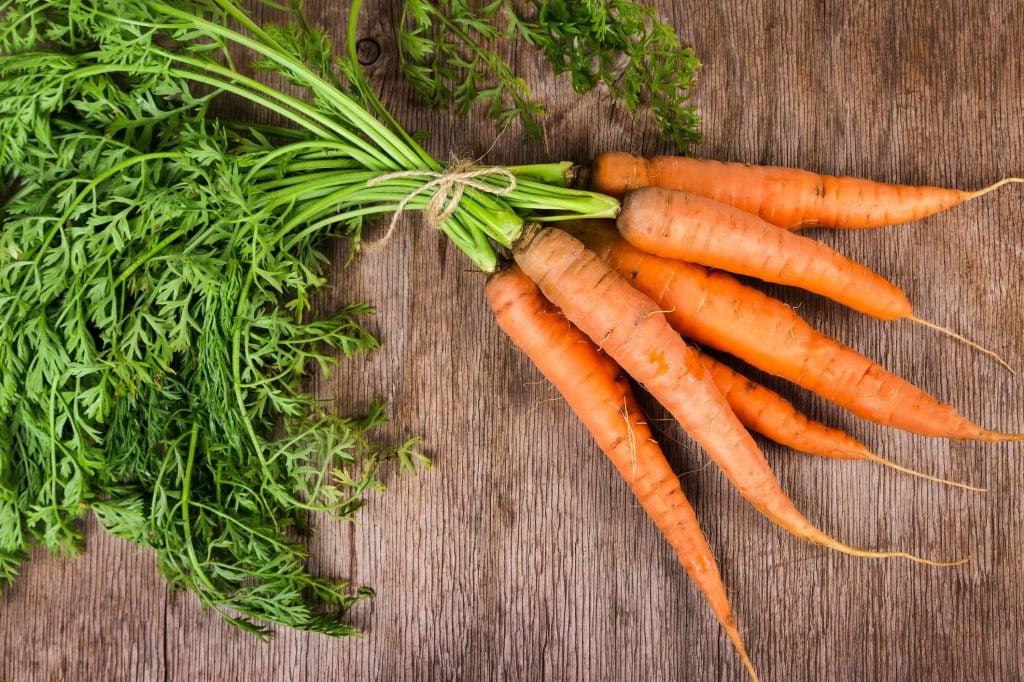
2. Find an Appropriate Spot
Well, this is a tricky task as this particular vegetable has a lot of demands. The only tip for growing carrots is to find a spot that is sunny six to eight hours a day or have a little shade in the afternoon. Furthermore, the soil should be loose and sandy and has a good drainage system. This is because carrots have slow growth and also have long roots to grow in heavy soil. In particular, the ideal way of growing carrots is with raised beds with fluffy soil.
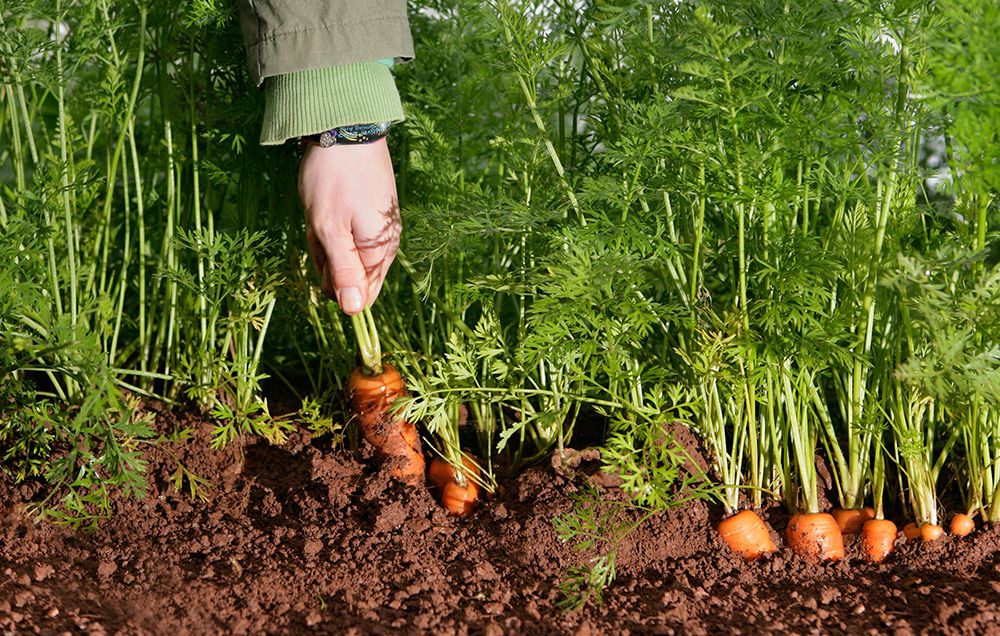
3. How to Plant it?
There are several steps involved in growing carrots-
- Make the cultivation area ready, and check there are no rocks, stones, or other clumps.
- Add compost or sandy topsoil if your soil isn’t loose or airy enough.
- Sow the seeds directly in the soil. Do not use the transplanting method as it might hinder the growth as the roots would be shifted.
- The seeds should be sowed ¼ inch deep and at the proper distance from the other seed. A minimum of 2-3 inches apart in a row.
- Further, keep the soil moist by often watering the soil. Also, the seed is very tiny; therefore, proper water is needed so that the soil mustn’t form a hard crust on top.
- Once the seeds are placed, all you need is patience, as it requires 14-21 days to emerge.
- Try the companion planting method to minimise the crusting problem. Plant radish or onion alongside.
- To have better produce be in continuity and plant carrots every four weeks through mid-summer.
- Do not over-water carrots.
- Fertilise with low nitrogen fertilisers every 5-6 weeks after sowing.
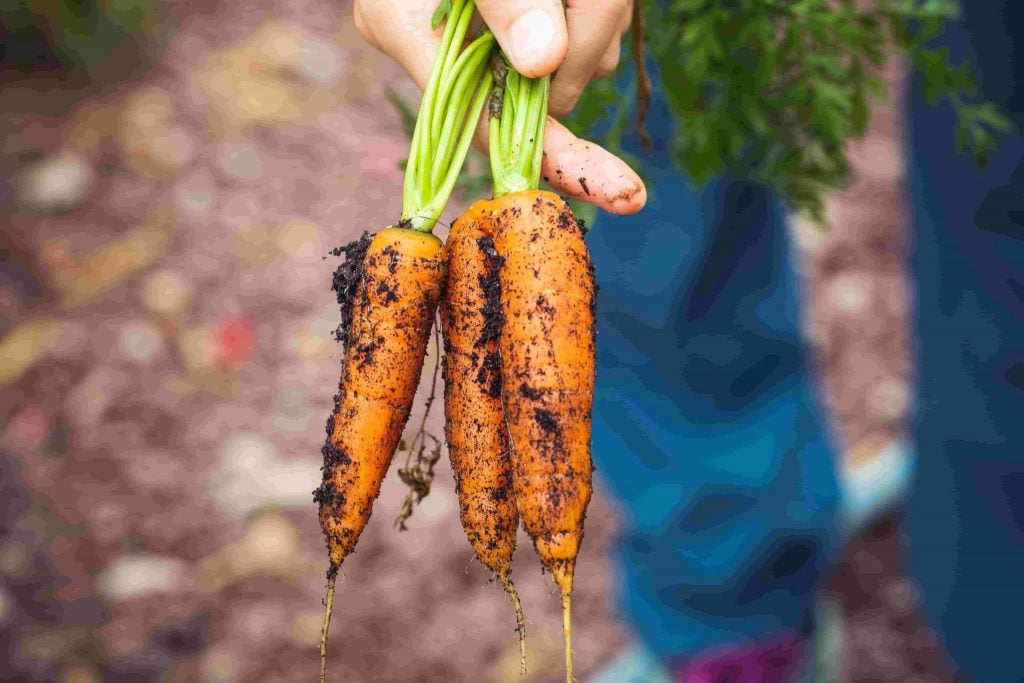
Different Types of Carrots
Well, it might sound surprising to you that carrots are not grown only in one colour. It comes in a rainbow of colours. Also, the grocery carrots are long and straight, but it comes in various shapes and sizes as well. You might know it well once you start growing your own batch of carrots.
Let’s look at the different varieties of carrots-
- Thumberline: It is generally round carrots that grow well in clumpy or clay soil and containers as well.
- Bolero: It resists most leafy pests and blights but grows 7-8 inches long and is bight tapered in shape.
- Little Fingers: These are generally small in shape, only 4 inches long, and one inch in thickness. They are good to grow in containers.
- Nantes: Cylindrical in shape, 6 to 7 inches long and sweet with a crunch in it.
- Danvers: This one is a classic dark orange coloured carrot which is 4 inches long and one inch thick that grows well in heavy soil.
- Since the space is less and carrots need enough space to grow so you need to have a wide container or pot.
- Prepare a low mix with one part sand and other potting mixes to create a bed for carrot seeds to germinate.
- Sow the seeds and cover them over with a layer of soil.
- Water well and keep the container or pot in a sunny area.
- Keep the soil moist and check from time to time, as these carrots will entirely be your responsibility.
- Once the seedlings have three to four leaves and stand tall, then snip the tops with scissors.
- Keep a check that roots receive 1 inch of water per week.
- Before harvesting the carrots, take a look at the neck of the roots. It should be ready in 2 months from when the seeds were sowed.
- Mostly the smaller the carrot, the better the taste, and it should be at least half of an inch in diameter.
- Younger and shallower roots are uprooted easily simply by pulling them out from the soil.
- Sometimes the larger and longer roots take ups some strength to maincrop carrots that are sown for winter eating and require the help of a fork to uproot them.
- Most importantly, you are sowing the seeds in the spring and early summer, then harvest before the season gets too hot. This is because heat can cause roots to get fibrous.
- And if you are harvesting in the fall, then have patience for one more frost, as it would taste even better after that. This is because frost helps to store energy in the form of sugars.
- If you wish to have seeds for the next season, then leave the carrots in the ground. Later you will find the top will flower and produce seeds in the upcoming year.
- Don’t get impatient in order to have sweet baby carrots. The smaller variety of carrots is the ones that have matured in smaller sizes only.
- Now when the harvesting is done, you need to sort and clean your carrots in order to store them properly.
- Twist or cut the top of the carrots and rinse it properly and air dry them.
- Further, seal it in an airtight plastic bag and refrigerate it.
- If there is no pest problem, then leave it in the soil for temporary storage.
- Mostly it should be eaten fresh if possible, but preserving using upper methods can lead it last longer.
- Carrots are not new inventions; they have been traced for about 5,000 years.
- There are various colours in which carrots are grown, that is, white, yellow, red, and purple.
- Carrots have two categories, domestic and wild.
- They are mostly 88% water.
- Carrots are the second most popular vegetable after potatoes.
- Around 6 million tons are produced annually.
- This was the first root vegetable to be canned and sent commercially.
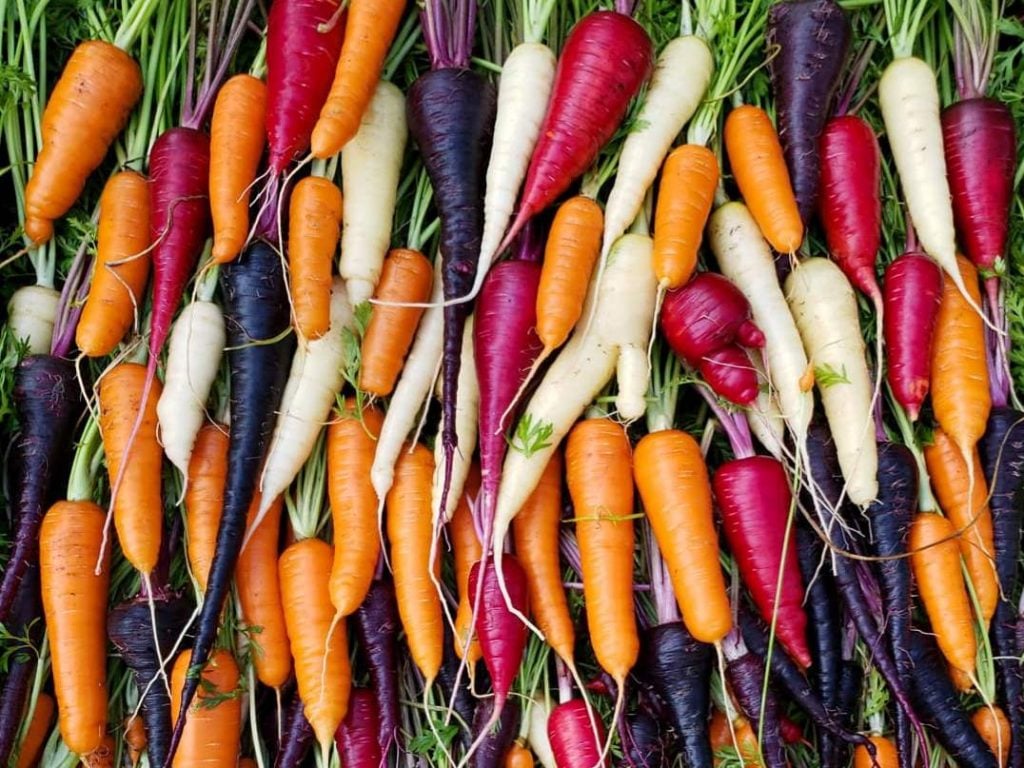
How to Grow Carrots in A Pot
Not all of us have plenty of space to grow fruits and vegetables. Still, it does not mean that they should not grow fruits and vegetables. There are tips for growing and taking care of carrots in a pot or a container-
How and When to Harvest the Growing Carrots
Well, this is a bit tricky part but don’t worry. We bring you some crucial tips for harvesting carrots-
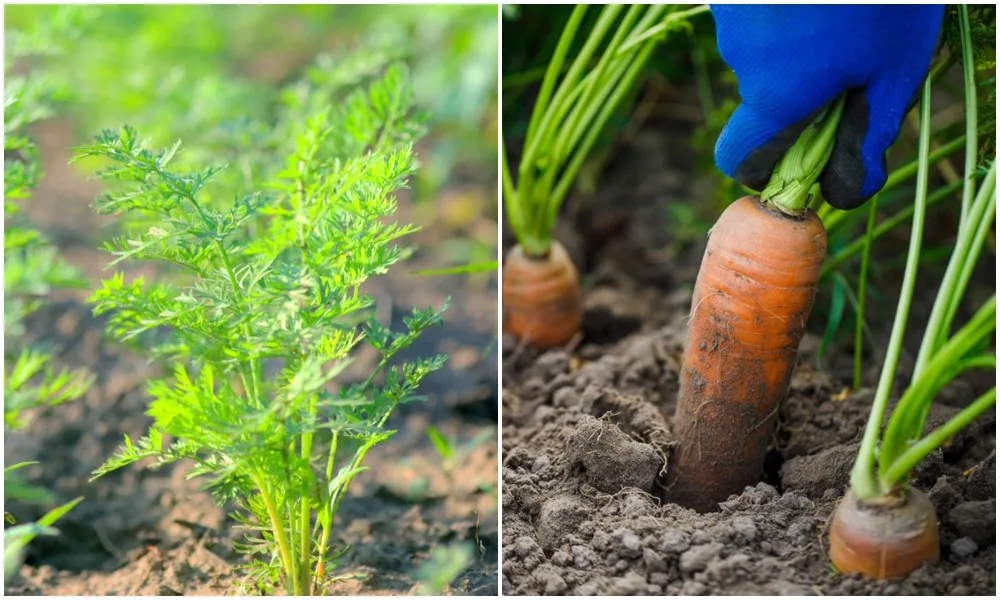
How To Protect Your Carrots From Pests And Diseases
Protection is one of the key elements to yield better produce. Carrots must be protected from carrot rust flies, carrot weevils, and leafhoppers. These are some common pests that attack this tasty vegetable. At regular intervals, you need to check your produce. The rust fly larvae destroy carrots. They burrow into the soil and feed on the roots of the carrot.
Other than weeds, also another source of disturbance in growing carrots. To prevent deformed roots, you need to keep the area free of weeds. Pruning is the best way to prevent your carrots from growing correctly.
How to Store Fresh Carrots?
Growing carrots is a task, but now it requires some effort to store your hard work for long-lasting use. Don’t worry. We have tips for storing your growing carrots properly-
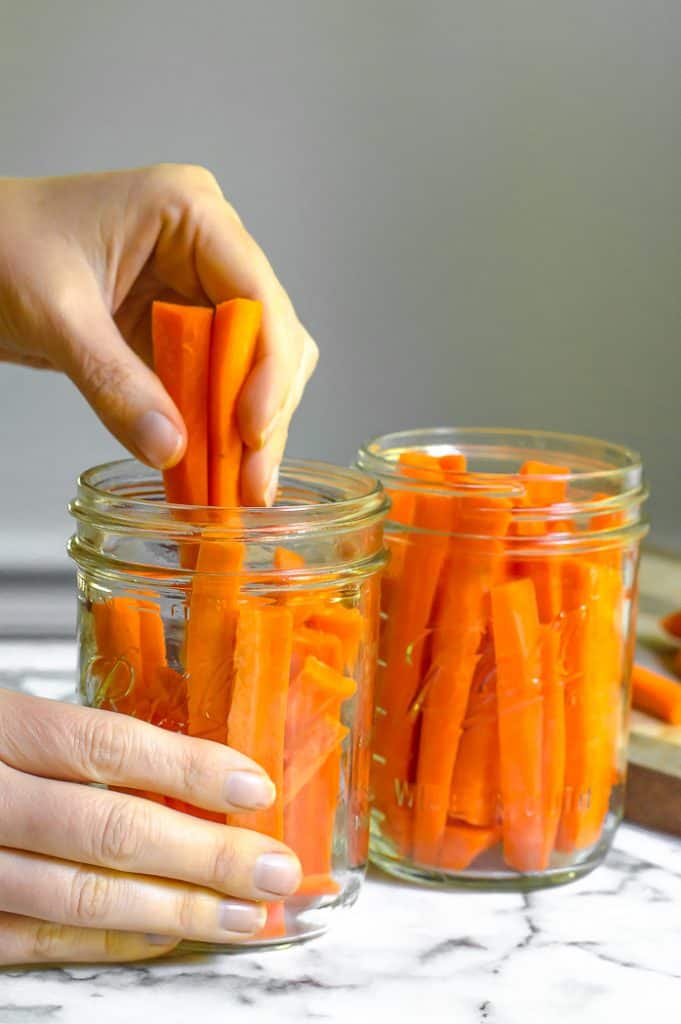
Effectiveness of Having Carrots in A Diet
Since childhood, it has been told to us to include carrots in our diet, and now some research also claims that it is a healthy option. Surprisingly, the study mentions that eating carrot jam for 10 weeks improves the growth rate in kids suffering from Vitamin A deficiency. Some other research shows that eating grated carrots for 60 days helps increase vitamin A levels in some pregnant women. In some cases, carrots consumed in excessive amounts can turn the skin yellow.
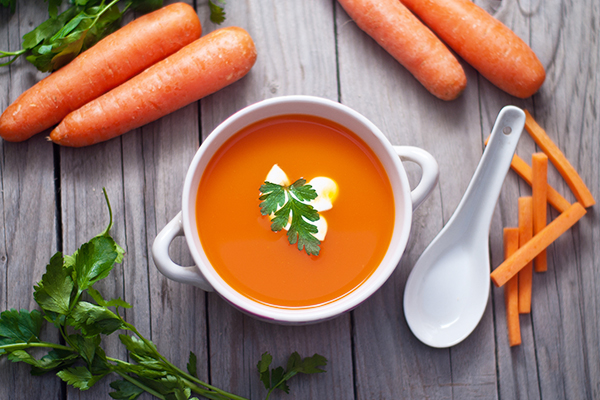
Here Are a Few Facts About Carrots
Carrots are often confused with parsnips. Well, it should be because they look alike. Carrots and parsnips are orange and have the same colour and shape. The main difference between the two is their taste. Carrots are mainly sweet, and parsnips have a spicy flavour, but they both complement each other in their taste.
Ready to Grow Carrots on Your Own?
We all had carrots in some or the other form but never thought of growing one may, be because there was no such need required when it was available in the market. Also, this might seem a hectic task to do. But now you have tips for growing and taking care of carrots to help you clear all the queries regarding this healthy vegetable. Also, now you are well accompanied to grow carrots on your own.
This particular vegetable is easy to grow and has several health benefits. In the stores, all you get is a single type of carrot, and sometimes those are not even fresh. Thus, it’s better to have your own basket of health grown in your backyard.
So when are you going to grow your basket of carrots?

![Growing Carrots: Guide to Planting, Harvesting, & Nutrition [UK] How To Grow Carrots](https://www.thearches.co.uk/wp-content/uploads/How-To-Grow-Carrots-1024x832.jpg)



